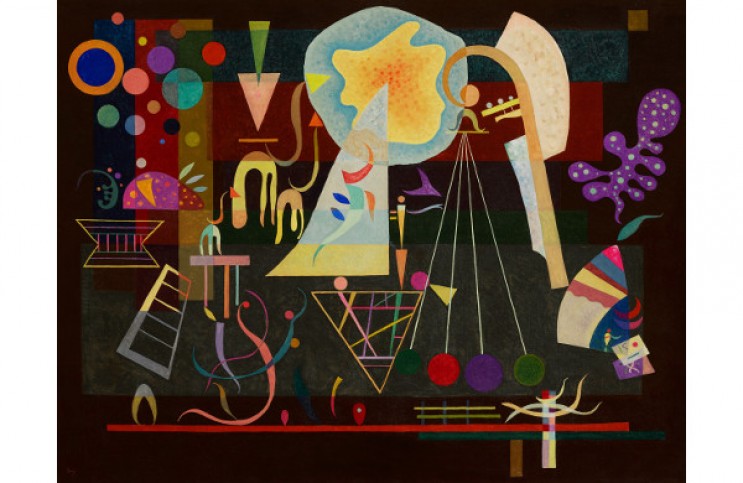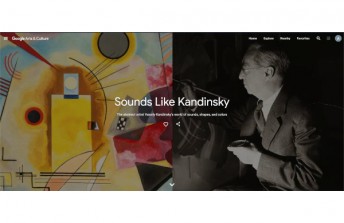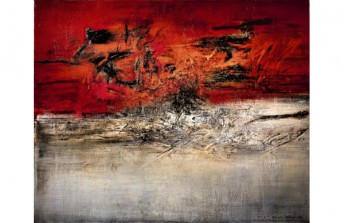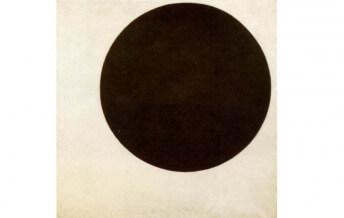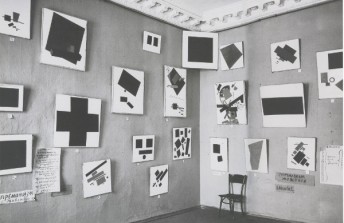A Kandinsky Masterpiece To Be Sold at Sotheby's After Half a Century
May 26, 2021
In 1964, Sotheby’s made news by auctioning 50 Wassily Kandinsky paintings from the collection of Solomon R. Guggenheim. The American businessman and founder of both the Solomon R. Guggenheim Foundation and the Solomon R. Guggenheim Museum had died 15 years prior. Guggenheim first met Kandinsky in Dessau, Germany, in 1930, where the artist worked as a professor at the Bauhaus. Over 20 years, Guggenheim collected 170 Kandinsky paintings, which eventually formed the basis for the collection of his eponymous museum. Frank Lloyd Wright is even said to have based the design of the museum on these Kandinskys. When the auction of 50 works from that original collection was announced in 1964, Kandinsky was already recognized globally as one of the most influential painters ever, but most of his works were in just a few collections in Russia and Europe. The Guggenheim Kandinskys represented the democratization of the legacy of the deceased master—a chance for everyday people to see rare, important works of art. The fear was that the auction would cause these works to leave America, and be hidden away in private collections. And indeed, 29 of the 50 sold that day did leave the country, and all 50 have barely been seen since. The reason Guggenheim officials gave in 1964 for deaccessioning the works was that they had no room to exhibit them in the museum. Absurdly, they then said they would use the proceeds to buy more paintings, which, assumedly, they would also have no room to exhibit. In the end, the auction raised $1,502,200, ten percent of which went to Sotheby’s. Fast forward to summer 2021, when “Tensions calmées” (1937)—one work from that notorious auction—is coming to auction again, also at Sotheby’s. It is now being offered with an estimate between $25-35 million by the very buyer who acquired it in 1964. The current Kandinsky auction record is already higher than that—in 2018, an abstraction from 1913 fetched $42 million. Yet, even as most people are barely surviving in the wake of a pandemic, it is quite possible this painting will break records. It makes me wonder: what would Kandinsky and Guggenheim think of this auction if there were alive today?
The Public View
In an article in the New York Times at the time of the 1964 Kandinsky auction, Baroness Hilla Von Ehrenweisen, a.k.a. Hilla Rebay, an accomplished abstract painter and close advisor to Mr. Guggenheim as he assembled his Kandinsky collection, was quoted as saying, “Solomon would be terrified if he were alive today and knew what was happening.” In a sense, the current auction is the fulfillment of the fears voiced by those such as the Baroness more than half a century ago. Viewed in the context of current global conditions, this sale a shameless show of extreme wealth and privilege—elitists trading masterpieces for ever-growing fortunes, while most of the struggling rabble of humanity will never have any chance at all to see great art in person. It feels painfully ironic that Kandinsky so eloquently voiced the idea that visual art operates on a similar level in our minds and hearts as music, and that he compared paintings such as “Tensions calmées” to symphonies.
It is remarkable how accurate his comparison between symphonies and paintings turned out to be. Today, symphonies in recorded form are available for anyone to hear, but precious few have the means to actually afford to hear the great symphonies played by the best musicians in person. In exactly the same way, anyone with internet access can search for an image of “Tensions calmées,” or any other Kandinsky painting. And others with slightly more means can even purchase a Kandinsky book and own elegant reproductions of his works. How many people today, however, will ever stand before an actual Kandinsky painting? How many are lucky enough to know one of the handful of wealthy elites who own such a work? How many live within affordable traveling distance of one of the handful of museums in possession of a Kandinsky, and that actually has it on public view?
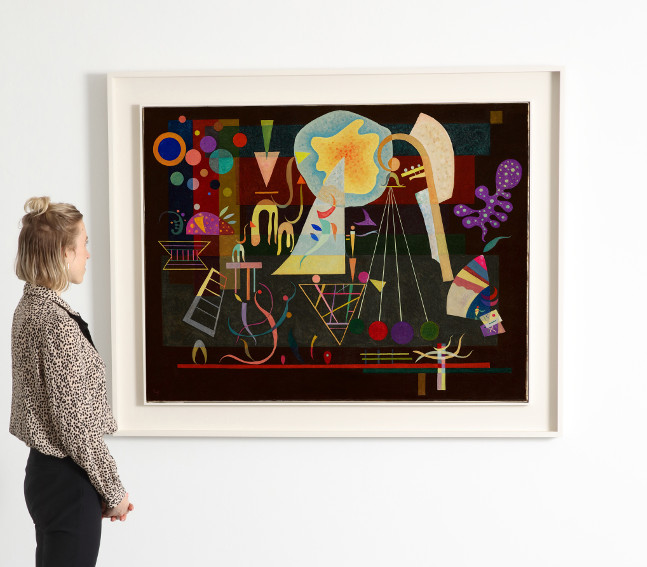
Wassily Kandinsky - Tensions calmées, 1937. In Situ. Photo courtesy Sotheby's
Hidden Beauty
Maybe this sounds like a silly rant, but I am posing a serious question. Kandinsky spoke about communicating something universal in his work. That does not sound like the language of someone who only wanted the people at the top of the social ladder to experience his art. At times like this, when auction houses advertise exclusive, rare, once-in-a-lifetime chances to bid exorbitantly high prices on a masterpiece, what are they truly advertising? The Sotheby’s press release says a lot about the high ideals Kandinsky wrote about, such as the spiritual qualities of his art. So are we to believe this sale is really intended to start a conversation about universality? It feels more like a conversation about exclusivity.
When Solomon R. Guggenheim originally purchased those 170 Kandinsky paintings, he did so because he wanted to enable a brilliant, struggling painter to pay the bills and simply paint. Guggenheim also very much wanted to preserve an aesthetic legacy that he felt was important. He wanted to share the notion that abstraction could offer all people a possible path towards something beyond the visible world. He built his museum precisely so the public could share in these insights. Kandinsky, for his part, painted “Tensions calmées” in Paris, between the time when he was banished from Germany by the Nazis and when World War II broke out. The translation of the title is “tensions subsided,” an allusion to the inner world of beauty and calm beyond the terrors of life, which he believed could open up to anyone through music, color, nature, and any other experience of the senses. Kandinsky specifically made it his mission to convey his beautiful beliefs in visual art. His legacy only matters if we can see it.
Featured image: Wassily Kandinsky - Tensions calmées, 1937. Photo courtesy Sotheby's.
All photos used for illustrative purposes only
By Phillip Barcio
